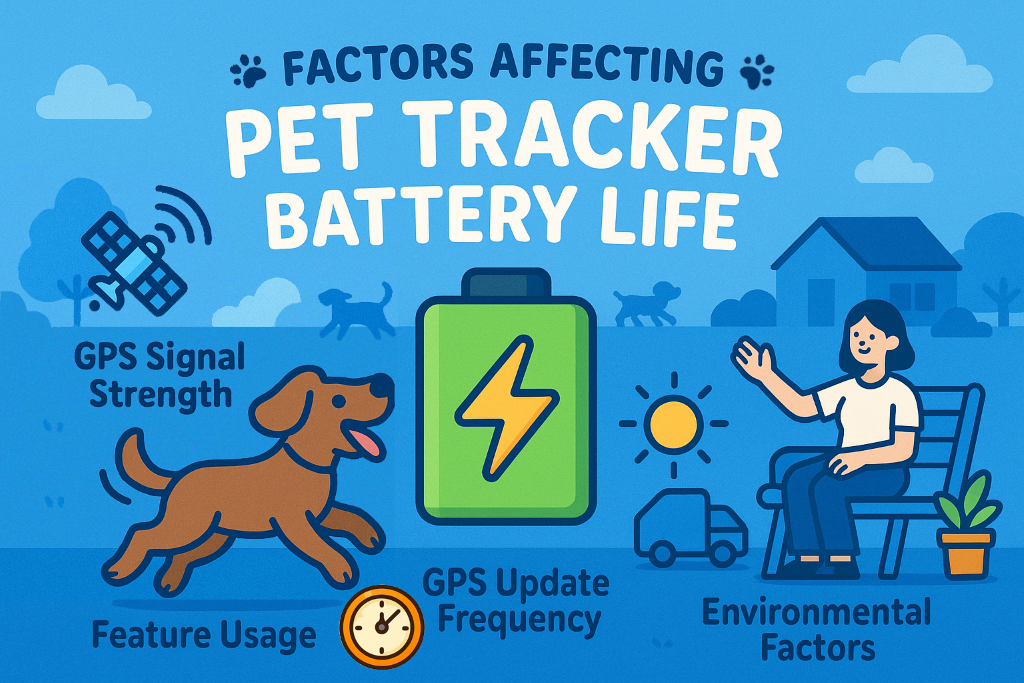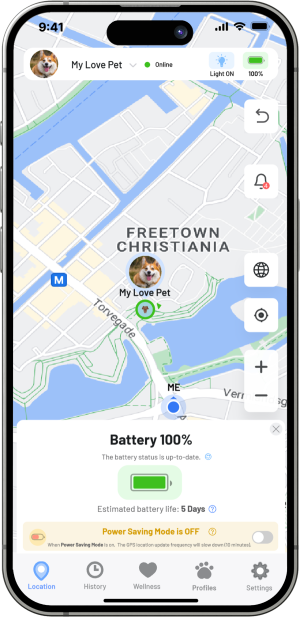Living Tracking VS. Battery Life
The battery usage duration is affected by several factors, including the frequency of location updates, the type of network used, environmental conditions (temperature, signal strength), and the use of the tracker’s features, such as lights, sound, Bluetooth, etc.

Tips:
The battery usage duration is affected by several factors, including the frequency of location updates, the type of network used, environmental conditions (temperature, signal strength), and the use of the tracker’s features, such as lights, sound, Bluetooth, etc. The usage time we provide is estimated based on normal use (2 hours of activity per day). Actual usage time may vary depending on the environment and your usage habits.
VOV Smart Care Pet Tracker:
VOV Smart Care Pet Tracker is equipped with a large-capacity battery and utilizes multiple positioning methods to optimize power consumption. It supports wireless charging, and you can check the battery level in real time through the app. When the battery is low, you will receive a notification to recharge in time. Additionally, you can choose our extended battery version for even longer usage time..
Battery life is undoubtedly a key concern when purchasing and using a pet tracker, just as it is for all electronic devices, including smartphones. You likely want a pet GPS tracker that meets your needs while minimizing hassle. This article will help you fully understand the factors that affect battery life, enabling you to use your tracker more effectively and avoid issues caused by a drained battery. Imagine how frustrating it would be to take your dog out for a walk or search for a lost pet, only to find that the battery is dead.
At VOV, we focus on battery life not only from a performance perspective but also from a user education standpoint. We prominently display battery information in the app interface and send alerts when the battery is running low, ensuring your pet tracker remains in optimal working condition.
What contributes to GPS tracker battery life?
First of the factors that impact battery life, is simply size. Batteries, especially the lithium-ion type used in our devices, have a minimum size to have the required effectiveness. The other side of the same coin, is we want to keep the device sized small enough to be versatile. It’s important to find a balance between the two.
Third of the factors that the use of the tracker’s features, such as lights, sound, Bluetooth, etc. Turning on lights and sound will accelerate battery consumption. When you frequently use these features, the Tracker’s usage time will be reduced.
The usage time we provide is estimated based on normal use (2 hours of activity per day). Actual usage time may vary depending on the environment and your usage habits. Here are some tips to help you better understand the current battery status and usage time.
Tips1:
You can tap the battery icon in the app to check the remaining battery level and see the estimated usage time.
Tips2:
You can use our online battery life calculator to estimate how long your tracker’s battery will last.
